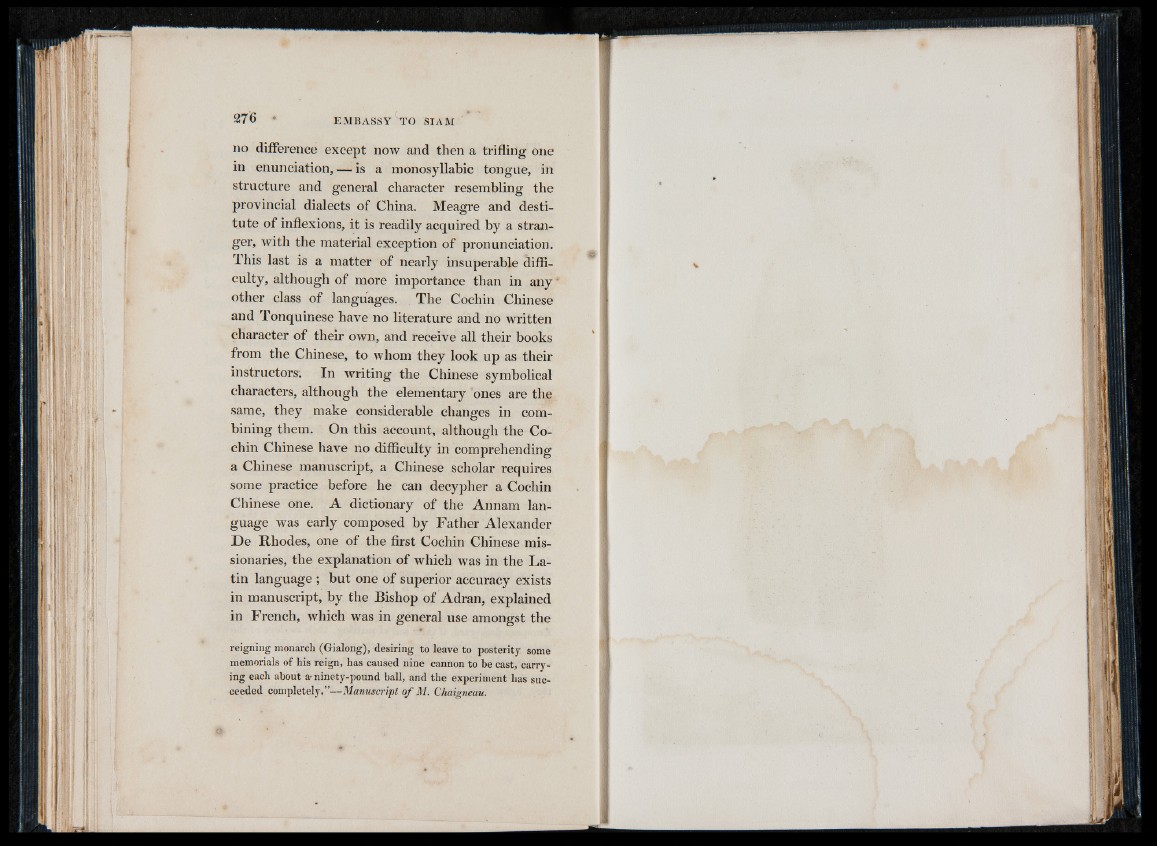
no difference except now and then a trifling one
in enunciation, — is a monosyllabic tongue, in
structure and general character resembling the
provincial dialects of China. Meagre and destitute
of inflexions, it is readily acquired by a stranger,
with the material exception of pronunciation.
This last is a matter of nearly insuperable difficulty,
although of more importance than in any
other class of languages. The Cochin Chinese
and Tonquinese have no literature and no written
character of their own, and receive all their books
from the Chinese, to whom they look up as their
instructors; In writing the Chinese symbolical
characters, although the elementary ones are the
same, they make considerable changes in combining
them. On this account, although the Cochin
Chinese have no difficulty in comprehending
a Chinese manuscript, a Chinese scholar requires
some practice before he can decypher a Cochin
Chinese one. A dictionary of the Annam language
was early composed by Father Alexander
De Rhodes, one of the first Cochin Chinese missionaries,
the explanation of which was in the Latin
language ; but one of superior accuracy exists
in manuscript, by the Bishop of Adran, explained
in French, which was in general use amongst the
reigning monarch (Gialong), desiring to leave to posterity some
memorials of his reign, has caused nine cannon to be cast, carrying
each about a? ninety-pound ball, and the experiment has succeeded
completely.”—Manuscript o f M. Chaigneau.